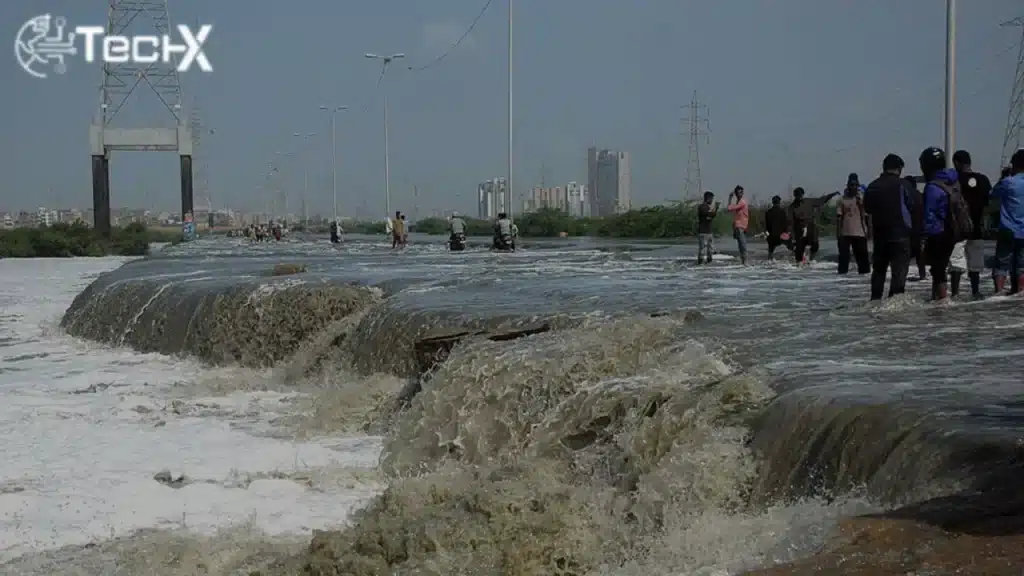The Malir River, locally known as Malir Nadi, has overflowed due to continuous heavy rainfall, sending torrents of water into surrounding neighborhoods. Villages like Khameso Jokhio Goth in Malir are among the worst affected, forcing families to abandon their homes in search of safer ground. Authorities have indicated that planning for a dam is underway to control future flooding and safeguard vulnerable communities.
M-9 Motorway Submerged by Massive Flood
The M-9 Motorway, a vital link between Karachi and other parts of Sindh, has been severely affected by floodwaters. Reports highlight large accumulations of water near the Jamali bridge, disrupting transportation and stranding vehicles. Karachi Mayor Murtaza Wahab personally visited the affected areas to inspect the devastation. The flooding has raised concerns over critical infrastructure resilience as rainfall continues to intensify across the metropolitan city.
Gulshan-e-Usman Faces Floodwater Inundation
Gulshan-e-Usman, situated close to the Malir River, has also been reeling under floodwater entering its streets and homes. Many residents have been displaced, while others face damaged property and a lack of essential supplies. Emergency services are working to relocate families to safer zones. However, limited resources and blocked roads have slowed relief efforts. Community members fear worsening conditions if the rains persist without immediate large-scale government intervention.
Karachi’s Infrastructure Strained by Rains
The ongoing monsoon downpour has pushed Karachi’s already fragile infrastructure to the breaking point. Overflowing streams and drains have sent water gushing into various neighborhoods, leaving streets impassable. Many areas are facing electricity blackouts and internet outages, cutting residents off from communication. Civic facilities are struggling under the pressure, exposing the need for long-term investments in drainage and water management systems across the city’s rapidly growing population centers.
Reports of Deaths Amid Rescue Efforts
Tragically, the rains have also claimed lives across the city. Electrocution and drowning incidents have been reported, underscoring the grave risks of urban flooding. Rescue teams, including Rescue-1122 and other emergency responders, are actively operating in affected zones to save stranded residents. Despite these efforts, poor accessibility and continued rainfall have hampered operations, leaving many communities anxiously waiting for help and fearing further casualties in worsening conditions.
Government Places Authorities on High Alert
The Pakistan Meteorological Department (PMD) has warned of further urban flooding and waterlogging across Karachi. In response, provincial authorities have been placed on high alert, with the Sindh government mobilizing rescue resources and initiating evacuations. Emergency shelters are being prepared for displaced families. Officials emphasize that the situation remains precarious, and continuous monitoring of vulnerable areas like Malir, Gulshan-e-Usman, and the M-9 Motorway is underway.
Flooding Part of Nationwide Crisis
The disaster in Karachi reflects a broader national emergency triggered by the 2025 monsoon season. Torrential rains have unleashed widespread flooding across Pakistan, impacting millions and resulting in hundreds of fatalities. Provinces like Punjab, Khyber Pakhtunkhwa, and Sindh have been hardest hit. The ongoing devastation has underscored the urgent need for comprehensive climate resilience strategies and infrastructure upgrades to protect urban and rural populations from recurrent seasonal disasters.
